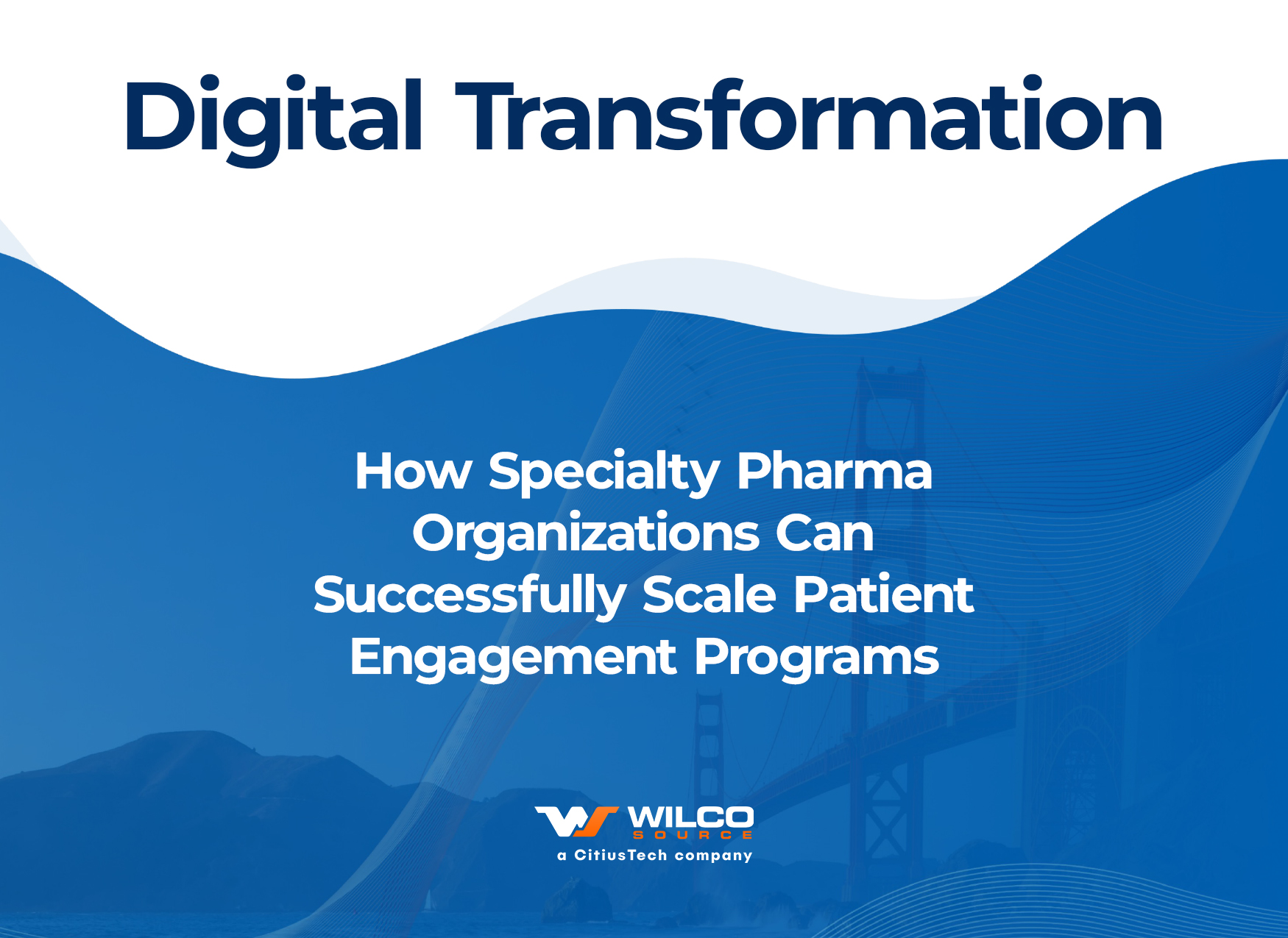How Specialty Pharma Organizations Can Successfully Scale Patient Engagement Programs

Specialty pharmaceuticals have developed a unique and much-needed place in the healthcare industry, and they’re on the rise. The surge over the last several years is attributable to scientific advancements and capital investments to better address patient needs. As such, not only have the number of specialty pharmaceutical firms increased but so too have the number of major pharma manufacturers adding specialty products to their portfolio.
The expansive and rapid growth of specialty therapies, however, has also given way to a few new challenges. As gene-based and cellular therapies are brought to market, pharma manufacturers now have to think about patient recruitment into clinical trials, efficient and timely distribution, prescription adherence, and even outcomes.
Although specialty drugs represent only about 2% of prescriptions, they account for nearly 40% of total drug expenditure. Given the increased prevalence, cost, and intricacies of specialty therapies, pharma organizations need to make a concerted effort to manage and scale patient engagement programs to meet patient needs as well as navigate the shift to value-based care.
To successfully scale direct patient engagement programs, specialty pharmacies need to focus on several key areas.
Trial recruitment using a direct, coordinated approach
Patient engagement is mission critical in specialty therapies. Particularly as these products continue to become more targeted and patient populations grow smaller, clinical trials have had to become more dialed in and focused on patient engagement from recruitment through to completion. But just as effective patient engagement lends itself to better trial recruitment, improved recruitment strategies, in turn, can lead to better patient engagement.
However, ongoing patient engagement as a strategy for patient retention is often overlooked. In fact, patient dropout rates for pharmaceutical clinical trials are estimated to range between 15 to 40% of enrolled participants, depending on the trial phase. Additionally, 15 to 20% of activated clinical trial sites never enroll a single patient.
True patient centricity will involve patients throughout the entire process, and pharmas need to have digital tools in place to facilitate this engagement. Customer relationship management platforms like Salesforce are proving key to active recruiting as well as drug adherence, tracking of outcomes, and even patient retention for future trials and programs.
Realize the value of prescription adherence
Studies show approximately 50% of patients do not take their medications for treating chronic conditions as prescribed. This nonadherence is problematic in many ways — it costs the healthcare system an estimated $300 billion annually, and it directly impacts patient outcomes.
In addition to nonadherence, specialty therapies often require precise timing in terms of delivery and administration of the treatment. This requires pharma organizations to now consider the entire value chain and potential variations within that chain. For instance, in some scenarios the therapy may be delivered directly to the patient and administered at home, in other cases, it will be administered at the site of care. Whatever the situation, there needs to be alignment in not only getting the therapy to the patient at the right time, but also clearly communicating proper administration in a way that resonates with the individual patient, whether that’s through their care provider or smartphone app notification.
This will become even more important as the industry continues to shift from fee-for-service reimbursement to a value-based care model. Pharma manufacturers will have to demonstrate how their therapies can deliver improved outcomes.
Monitoring outcomes to drive change
While the patient-centricity movement is now firmly entrenched in pharma, relatively few companies are measuring the impact of their efforts. Part of the stumbling block is uncertainty around what to measure, compounded by a lack of tools to efficiently track results across the complex journey of specialty patients.
Still, compiling and reporting data gives specialty pharma manufacturers key insight into the real-world application of drugs, and can reveal what’s working and what’s not when it comes to patient engagement and adherence. This enables pharma organizations to refine and improve processes over time, as well as demonstrate outcomes to care providers, payers, and patients. However, managing a specialty patient across an episode of care, particularly if they are receiving a number of interventions and multiple sites of care, is not without its challenges. This is where cloud-based technology and CRMs like Salesforce can streamline the effort.
Enhancing current technology
In addition to an existing electronic health record (EHR), health systems will need an effective opportunity and engagement management system to track patients throughout their entire specialty journey.
Digital systems with robust reporting mechanisms can help uncover outcomes data that can support the organization’s business objectives while cultivating a happier, healthier patient community.
To support areas of focus such as trial recruitment, prescription adherence, and outcomes monitoring, specialty pharma organizations must integrate dynamic technology solutions, including patient-facing technologies like mobile health applications, telehealth, patient monitoring, and personal health record tools.
The deployment and adoption of ePrescribing, EMR/EHR integration, mobile apps, games, and other emerging technology will significantly improve patient engagement efforts — and reduce the pharma industry’s reliance on manual and time-consuming processes.
As specialty pharmacies gain more prevalence in the healthcare sector, establishing effective trial recruitment, drug adherence, outcomes monitoring, and technology solutions will continue to drive better patient engagement strategies and thus greater patient outcomes.